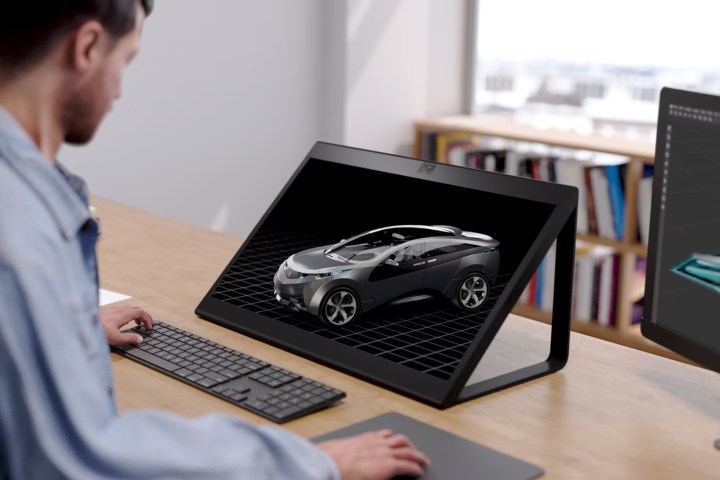Sony just announced its latest Spatial Reality Display, the ELF-SR2, which displays a stereoscopic image you can see without needing special glasses.
Sony’s new generation of 4K-resolution spatial displays is bigger and better than ever. Face-tracking, 3D display technology isn’t new, but the display size makes this latest offering notable.

The ELF-SR2’s 27-inch display eclipses the previous generation’s 15.6-inch screen, a much more appealing size for the professional creators Sony is targeting. The $5,000 cost is the same as the much smaller ELF-SR1. While a bargain in that regard, it’s still priced out of reach for enthusiasts.
However, Sony’s large 3D display will be welcome in high-end design studios, architectural firms, and medical facilities. The cost can easily be factored in when three-dimensional visualization is critical to an important project.
Stereoscopic viewing of a flat image without glasses has been explored for several years. The challenge is maintaining the 3D effect when moving your head from the center of the display.
Sony posted a YouTube video that claims the display offers comfortable viewing from many angles. The specifications show a range of 50 degrees side-to-side and 60 degrees vertically, allowing quite a bit of freedom to move around or even to stand.
Autostereoscopic (3D without glasses) displays often fail when a second person tries to see the effect, which is unfortunately true with Sony’s latest 3D technology.
At 400 nits, the screen should be bright, and the 10-bit display covers 100% of the Adobe RGB color gamut. The contrast is 1000:1, but it does have an antiglare coating to reduce reflections.
Sony isn’t the only company making 3D displays, of course.
An intriguing 3D laptop from Dimenco caught our attention at CES 2023. It also uses face-tracking to render separate views for each eye in real time.
Breylon’s Ultra Reality display simulates a 122-inch 3D display in a 32-inch desktop monitor within a limited range of head movement.
Overall, Sony’s ELF-SR2 is a nice upgrade in size and keeps advancing this technology for professional use.



